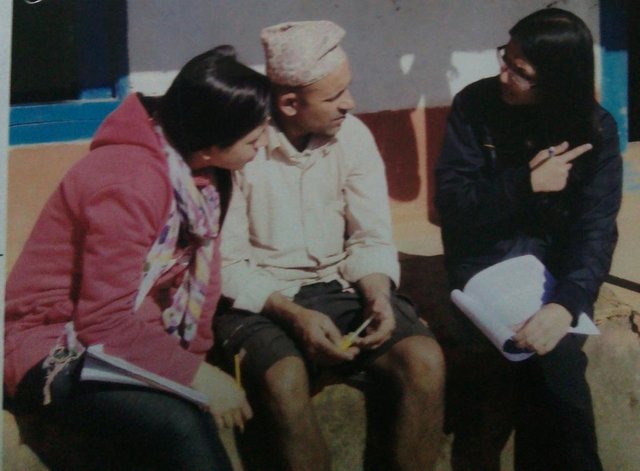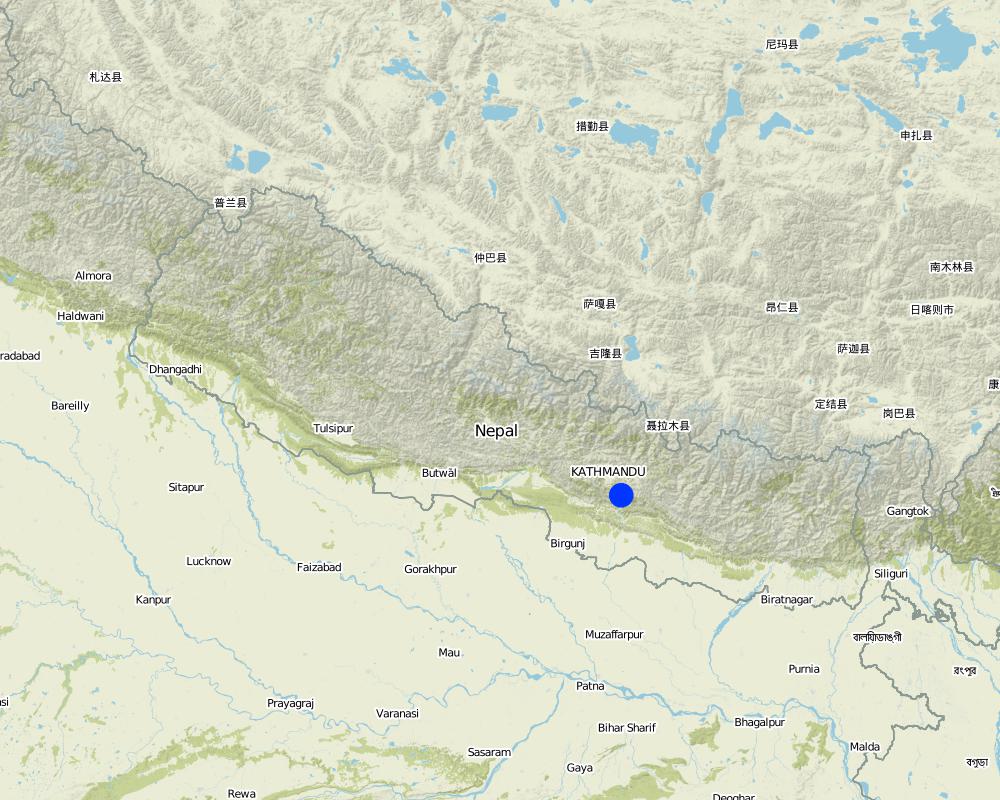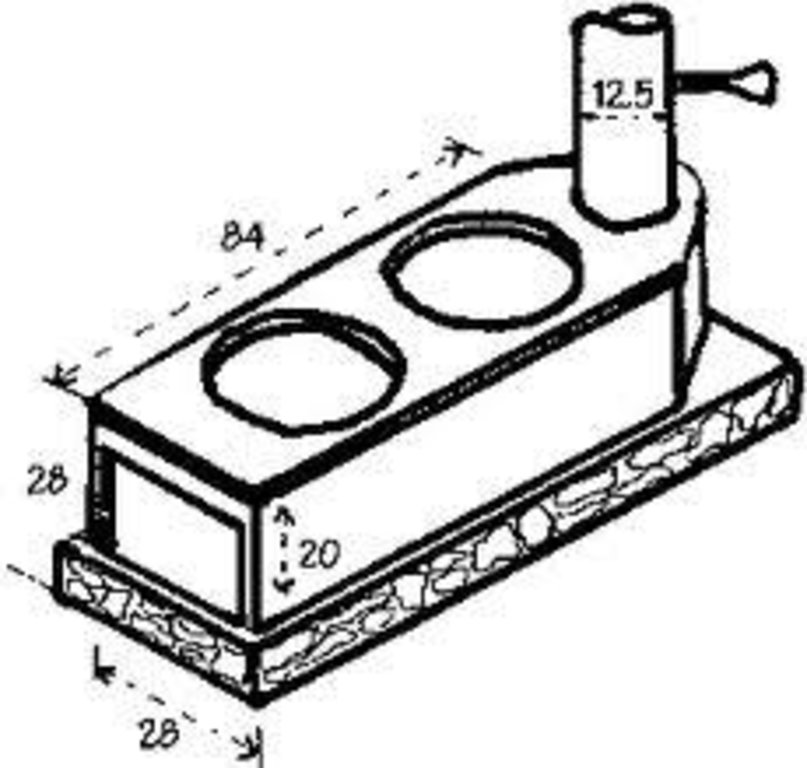Improved Stove for household cooking use [Nepal]
- Creation:
- Update:
- Compiler: Sabita Aryal
- Editor: –
- Reviewers: David Streiff, Alexandra Gavilano
Sudhariyeko chulo
technologies_1202 - Nepal
View sections
Expand all Collapse all1. General information
1.2 Contact details of resource persons and institutions involved in the assessment and documentation of the Technology
SLM specialist:
Shrestha Ishani
Kathmandu University
Nepal
SLM specialist:
Manandhar Shishir
Kathmandu University
Nepal
Name of the institution(s) which facilitated the documentation/ evaluation of the Technology (if relevant)
Kathmandu University (KU) - Nepal1.3 Conditions regarding the use of data documented through WOCAT
The compiler and key resource person(s) accept the conditions regarding the use of data documented through WOCAT:
Yes
1.4 Declaration on sustainability of the described Technology
Is the Technology described here problematic with regard to land degradation, so that it cannot be declared a sustainable land management technology?
No
1.5 Reference to Questionnaire(s) on SLM Approaches (documented using WOCAT)

Chyamrangbesi - A smoke free zone by using … [Nepal]
The ways and means used to promote and implement to improved stove to improve human well-being and sustainable land use.
- Compiler: Sabita Aryal
2. Description of the SLM Technology
2.1 Short description of the Technology
Definition of the Technology:
The technoloigy is engineered in such a way that there will be less consumption of wood and less emission of smoke.
2.2 Detailed description of the Technology
Description:
The technology document is entitled"improved Stove In Rural Areas".This technology brings more effective way of cooking compared to the old one.Here,unlike the rural areas wood consumption is lesser and wood consumption is lesser and there is also proper outlet of smoke produced.In the old stove more wood and fuelwood were consumed and smoke were accumul;ated in the cooking site which is the kitchen.Thus it reduces health hazards.
Here we have a single input area to enter the fuelwood for a pair os stoves. This is done because the heat pressure is not allowed to escape and the same heat produced shifts in the other stove and helps in heating.
Purpose of the Technology: The purpose cof the technology was to reduce the health hazards due to accumulation of smoke in the kitchen to reduce the fuelwood consumption, to save time in cooking and hence to maintain a smoke free zone.
Establishment / maintenance activities and inputs: The plant was first initiated by VDC in magh(2068B.S) by the assistance of Remerick Chyamrangbesi VDC and other co operatives.The first step was that labourers and technicians were given training an how to set up the stoves.Then they were assigned to construct it in homes.The labour charge and wages were covered by the organisation.The skills were not hightech so the skill was passed to the individuals of house and the maintenance was done.
Also, the organization send a person per year to if the stove is in proper working condition or not.
Natural / human environment: The technology mainly focuses on the health of the people exposed due to the indoor pollution.Since there was proper outlet no smoke was trapped inside which massively reduced air pollution.Besides less firewood was consumed,hence reducing the rate of deforestation and smoke emission.Also the ashes obtained from the burning firewood was a good fertilizer.
2.5 Country/ region/ locations where the Technology has been applied and which are covered by this assessment
Country:
Nepal
Region/ State/ Province:
Chyanrangbesi
Further specification of location:
Kavrepalanchowk
Specify the spread of the Technology:
- applied at specific points/ concentrated on a small area
Comments:
The village Chyangbesi has an area of 28.97 sq km. (source VDC database)
Map
×2.6 Date of implementation
If precise year is not known, indicate approximate date:
- less than 10 years ago (recently)
2.7 Introduction of the Technology
Specify how the Technology was introduced:
- through projects/ external interventions
Comments (type of project, etc.):
Feb 2012: initiation by 24th Jestha
3. Classification of the SLM Technology
3.1 Main purpose(s) of the Technology
- create beneficial social impact
3.2 Current land use type(s) where the Technology is applied

Settlements, infrastructure
- Energy: pipelines, power lines
Comments:
Major land use problems (compiler’s opinion): Irrigation facilities were not monitored.
3.5 SLM group to which the Technology belongs
- energy efficiency technologies
3.6 SLM measures comprising the Technology

other measures
3.7 Main types of land degradation addressed by the Technology

biological degradation
- Bq: quantity/ biomass decline
Comments:
Main causes of degradation: deforestation / removal of natural vegetation (incl. forest fires) (Deforestation for fuelwood)
3.8 Prevention, reduction, or restoration of land degradation
Specify the goal of the Technology with regard to land degradation:
- prevent land degradation
- reduce land degradation
4. Technical specifications, implementation activities, inputs, and costs
4.1 Technical drawing of the Technology
Technical specifications (related to technical drawing):
Two stoves are attached and firewood you require for first stove with input only.Heat is transferred to another stove aswell.It works on the principle of heat entrapment.
Location: Chyamrangbesi. Kavre
Date: 3/12/2012
Technical knowledge required for field staff / advisors: low (field staffs taught the technique to local people)
Main technical functions: increase in nutrient availability (supply, recycling,…)
Secondary technical functions: increase in organic matter, promotion of vegetation species and varieties (quality, eg palatable fodder), reduction of dry material (fuel for wildfires)
Structural measure: Soil shape
Vertical interval between structures (m): S,C,E
Structural measure: Iron,Chimney
Vertical interval between structures (m): O
Construction material (earth): soil excavated
Construction material (concrete): Concretes were used to make the structure solid and stable.
Construction material (other): Iron and tin was used to make the chimney and also to suppoirt the structure.
Author:
Shishir Manandhar, Gauridhara.Kathmandu
4.3 Establishment activities
| Activity | Timing (season) | |
|---|---|---|
| 1. | Technicians were trained by Rimrek | MAgh 2068 |
| 2. | Construction | magh 2068 |
| 3. | Final | Jestha 24,2069 |
| 4. | Materials cost |
4.4 Costs and inputs needed for establishment
| Specify input | Unit | Quantity | Costs per Unit | Total costs per input | % of costs borne by land users | |
|---|---|---|---|---|---|---|
| Labour | Labour | unit | 1.0 | 400.0 | 400.0 | |
| Total costs for establishment of the Technology | 400.0 | |||||
| Total costs for establishment of the Technology in USD | 400.0 | |||||
4.5 Maintenance/ recurrent activities
| Activity | Timing/ frequency | |
|---|---|---|
| 1. | Monitoring |
4.6 Costs and inputs needed for maintenance/ recurrent activities (per year)
Comments:
Machinery/ tools: Hand hoe
Labours as raw materials and ingrediaments were locally available, and hence free.Thus expenses was mainly on labour charge.Mininmum quantity of iron were used but so it was negligible.
4.7 Most important factors affecting the costs
Describe the most determinate factors affecting the costs:
Labour Skills: Initially the skilled people were hired to construct the stove and then the skills were acquired by the villagers so thet they can themselve make it onwards.The raw materials required were locally available which reduced the cost.
5. Natural and human environment
5.6 Characteristics of land users applying the Technology
Off-farm income:
- 10-50% of all income
Relative level of wealth:
- poor
- average
Individuals or groups:
- groups/ community
Gender:
- women
- men
Indicate other relevant characteristics of the land users:
Land users applying the Technology are mainly common / average land users
5% of the land users are rich and own 20% of the land.
85% of the land users are average wealthy and own 70% of the land.
10% of the land users are poor and own 10% of the land.
Off-farm income specification: There wasn't any significant charge in the economy but pollution was kept in check and reduce future expenses in terms of medical expenditure.
5.7 Average area of land used by land users applying the Technology
- < 0.5 ha
- 0.5-1 ha
- 1-2 ha
- 2-5 ha
- 5-15 ha
- 15-50 ha
- 50-100 ha
- 100-500 ha
- 500-1,000 ha
- 1,000-10,000 ha
- > 10,000 ha
Is this considered small-, medium- or large-scale (referring to local context)?
- small-scale
5.8 Land ownership, land use rights, and water use rights
Land ownership:
- communal/ village
Land use rights:
- communal (organized)
Water use rights:
- communal (organized)
Comments:
Every household had their own land property. But common areas and forests were used for utilization of fuel.
5.9 Access to services and infrastructure
health:
- poor
- moderate
- good
education:
- poor
- moderate
- good
technical assistance:
- poor
- moderate
- good
employment (e.g. off-farm):
- poor
- moderate
- good
markets:
- poor
- moderate
- good
energy:
- poor
- moderate
- good
roads and transport:
- poor
- moderate
- good
drinking water and sanitation:
- poor
- moderate
- good
financial services:
- poor
- moderate
- good
6. Impacts and concluding statements
6.1 On-site impacts the Technology has shown
Socio-economic impacts
Production
crop production
Comments/ specify:
Ash was used as fertiliser
Income and costs
workload
Comments/ specify:
Less firewood consumption
Socio-cultural impacts
health situation
Quantity before SLM:
N/A
Quantity after SLM:
N/A
Comments/ specify:
Reduce indoor pollution
livelihood and human well-being
Comments/ specify:
Specifically,the health hazards due to indoor air pollution and smoke effects has massively reduced.
Ecological impacts
Climate and disaster risk reduction
emission of carbon and greenhouse gases
Quantity before SLM:
N/A
Quantity after SLM:
N/A
Comments/ specify:
Less firewood conmsumption so less smoke produced
6.2 Off-site impacts the Technology has shown
Emission of smoke
Comments/ specify:
Less smoke generated
Health hazards
Comments/ specify:
Systematic arrangement of smoke,less smoke,proper outlet of smoke
6.3 Exposure and sensitivity of the Technology to gradual climate change and climate-related extremes/ disasters (as perceived by land users)
Comments:
Since the technology was indoor none of the above factors had only effect on technology,
6.4 Cost-benefit analysis
How do the benefits compare with the establishment costs (from land users’ perspective)?
Short-term returns:
slightly positive
Long-term returns:
positive
How do the benefits compare with the maintenance/ recurrent costs (from land users' perspective)?
Short-term returns:
neutral/ balanced
Long-term returns:
neutral/ balanced
Comments:
Funds were given by VDC for establishment. The locals acquired the skills later and maintainence cost effective.
6.5 Adoption of the Technology
Of all those who have adopted the Technology, how many did so spontaneously, i.e. without receiving any material incentives/ payments?
- 0-10%
Comments:
100% of land user families have adopted the Technology with external material support. Remerick and Chyamrangbesi VDC supplied full financial assistance. VDC and Remerick brought the technique and trained the technicians paying their wages. There is a strong trend towards spontaneous adoption of the Technology. Since it is hygenic and pollution free and also there is less consumption of fuel it is growing fast.
6.7 Strengths/ advantages/ opportunities of the Technology
| Strengths/ advantages/ opportunities in the land user’s view |
|---|
| Health problems resulting from smoke have been less of a problem |
| Time period for cooking was comparatively lesser. |
| Strengths/ advantages/ opportunities in the compiler’s or other key resource person’s view |
|---|
| Less firewood was consumed leading to minimum indoor pollution |
| Saved time in wood collection as less firewood was consumed |
6.8 Weaknesses/ disadvantages/ risks of the Technology and ways of overcoming them
| Weaknesses/ disadvantages/ risks in the land user’s view | How can they be overcome? |
|---|---|
| No disadvantages |
| Weaknesses/ disadvantages/ risks in the compiler’s or other key resource person’s view | How can they be overcome? |
|---|---|
| Though lesser smoke is produced smoke is still harmful to atmosphere | Filtering devices can be inserted in chimneys,but that will be expensive. |
| Instead of blowing air by mouth certain mechanical devices can be use | Devices available in market can be used |
7. References and links
7.1 Methods/ sources of information
- field visits, field surveys
- interviews with land users
7.2 References to available publications
Title, author, year, ISBN:
www.mapkarta.com
Available from where? Costs?
Thamel
Links and modules
Expand all Collapse allLinks

Chyamrangbesi - A smoke free zone by using … [Nepal]
The ways and means used to promote and implement to improved stove to improve human well-being and sustainable land use.
- Compiler: Sabita Aryal
Modules
No modules



